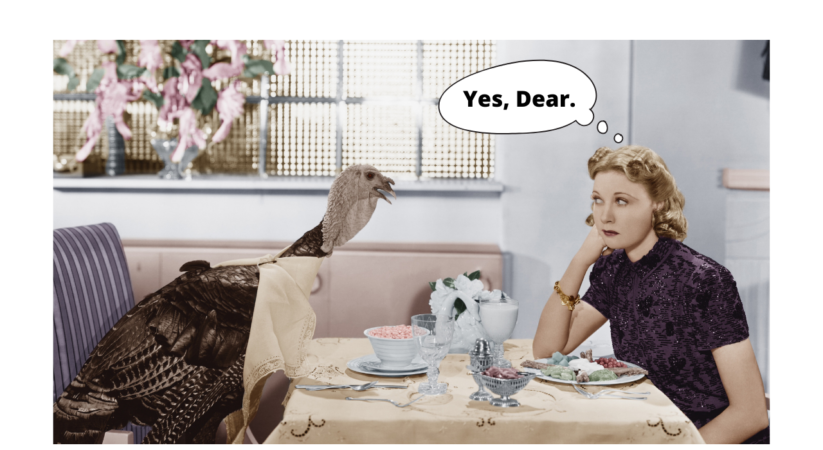Pinpointing Your Communication Style
It’s important to know what your own communication style is before you attempt to communicate effectively. This is true for both the personal and professional sides of your life. So, how can you figure out your communication style? First, you need to know what the different styles are called and how they affect your conversation. This post will focus on just one style, so be sure to check out my other posts to find out more about the other three communication styles. If you are a passive communicator, you’re in the right spot.
The Passive Communicator
Passive communicators usually have a hard time expressing what they need, yet also readily defend their ideas, even if it’s barely heard or noticed. They will hesitate to say something because conflict brings them more stress than they think they can handle. Family or coworkers might see passive communicators as easy going or shy. Does this sound like you? I’m going to tell you right now, that this is definitely my go-to when communicating in most circumstances. I don’t like arguing. I don’t like having to defend my opinion…especially to someone who I know (or think I know) isn’t ever going to understand it from my perspective. That being said, I have learned to adapt my communication style over the years and I think I’ve grown into a well-rounded communicator. In my experiences with co-workers and friends, I’m usually more on the assertive side…but that wasn’t always the case!
Communication: Being passive
I will admit, there are many-a-heated-discussion between my husband and I where I fall silent. It’s a defense mechanism I accidently learned in a somewhat unhealthy relationship of the past. It’s not always the right response to give in our conversations, and I am getting better, but there is much room for improvement. If you are someone who shows passive qualities in the workplace, it might be a good idea to step out of your comfort zone and voice your opinion. My advice? Start small. Speak with a trusted coworker about your idea and work your way up from there. Heck, you can straight out tell this coworker that you are trying to be more assertive and ask him or her for some feedback (and you can bet your bottom dollar we will be talking about feedback later).
Managing Passive Communicators
How can we effectively communicate with someone we identify as a passive communicator? Well, whether this is your style or not, you need to know how to manage someone who is passive in their communication. The best thing to do is not single them out in front of a crowd. If it’s someone in your family, a crowd can literally mean anyone more than just you and the other person. Keep it private and have a one on one conversation. If you are in a work setting, invite the person to lunch, send them an e-mail message or start a texting conversation. Giving passive communicators multiple avenues to communicate can lessen the stress they might feel by being contacted in the first place.
You might be a passive communicator if…
If you read any of my other blog posts, you know that I’m a trained teacher. Well, in my fourth year of teaching elementary school (first year at this specific school) I had a very awkward conversation with a coworker. I’m sure it wasn’t awkward for her, because she was clearly not a passive communicator. At the time, I didn’t think I was either, but looking back on the situation, I’m not so convinced. A coworker was assigned to observe me teaching a lesson and give me feedback. The observed lesson took place and I thought it went pretty well. In my experience at my previous school, observations occurred at one time and the discussion about the observation took place at an agreed upon time afterwards. Sounds like a pretty normal string of events, right?
This is where the communication got sticky…
After I finished teaching my math lesson, I was about to have my students transition to their independent station work, which was the normal progression of the lessons taught at this school, and my “mentor” should have known that since she was also a math teacher. I’m getting all riled up just thinking about it! Deep breaths. Anyway, I was blindsided by said teacher with an impromptu meeting about the observation…while the class just sat there staring at us. I mean, come on…even non-teachers can imagine how awkward this would be. Especially given that her feedback was mostly negative. I’m not saying I can’t handle constructive criticism, because I totally can. I just wasn’t expecting to be put down in front of my students…who looked up to me and, until this point, respected me.
What is a passive communicator to do?
Clearly, I was a passive communicator, seeing how I reacted to being “called out” in front of my students. At the time, I didn’t do ANYTHING. I just stared at my coworker, with a surprised and confused look, while constantly darting my eyes from her to my classroom full of kids. I guess I was hoping she’d get the hint and back off a little. This was not the case, so I stood there, took the criticism (which I’m sure was meant to be constructive, but I was seeing red at this point), without responding. Here’s what I should have done: calmly interject right from the start and offer an alternate time to discuss the observation notes. How easy would that have been? Of course, I was such a passive communicator that coming up with an option like that would not have crossed my mind.

Passive Communicators: Build on your experiences
At present, with my communication style somewhat adapted, (there’s still a little passive energy left in me…can’t help it!) I’ve learned to voice my opinion from the start. It’s not always easy, especially when I’m conversing with someone who is an aggressive communicator (*cough, cough* my husband…just kidding!). In such a case, it’s helpful to be able to understand how an aggressive communicator ticks. You can read more about that in my upcoming communication styles blog posts. If you want insight on all four of the communication styles, check out this video on our LifeSoldier Living YouTube Channel.
Passive Communicators: What did we learn?
In review, passive communicators tend to avoid conflict, remain silent and are often easy going or agreeable. These are not all bad things, and do come in handy sometimes. If you are a passive communicator who understands what you’re doing and is equipped with mechanisms to function effectively, you should be able to communicate successfully with others. After identifying someone who leans toward the passive communication style, it is important to help that person feel safe and comfortable when confrontations take place. Give the person options for modes of communication, yet be direct with your delivery. It’s essential to identify your own style of communication, both personally and professionally. Once you do that, and you learn about each communication style, you can identify them in others and adapt your communication as needed.
Check out my other blog posts, and be on the lookout for more communication style posts!





